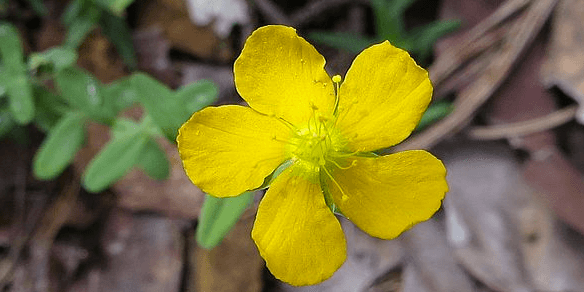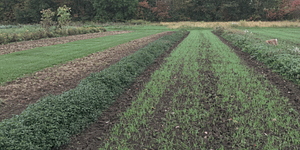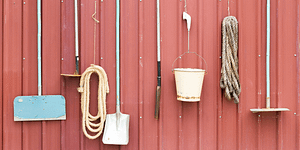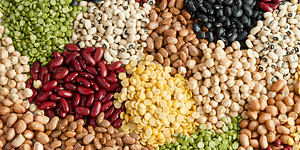Too Much St. John’s Wort? Look to the Cows

No matter what part of the country you live in, non-native plant species take root and thrive. Dubbed “invasive,” these species are often considered an annoyance at best and aggressively eradicated with harmful chemicals at worst. They are deemed enemies of the land and have become targets of an ongoing war fought with a steady arsenal of bulldozers, chainsaws, and herbicides.
But what if they were not viewed in such a negative light? What if they could be examined, understood, and harnessed for beneficial uses instead?
Tao Orion, author of Beyond the War on Invasive Species, and Katrina Blair, author of The Wild Wisdom of Weeds, each offer up a different perspective on how to approach many species of plant life deemed a threat.
Drawing on their unique and extensive experiences working with wildlife, Orion and Blair will share how to manage and use each species based on holistic, permaculture-inspired ideas. Take a look through their approaches to St. John’s Wort and stay tuned for more alternative perspectives on managing invasive species.
How Cattle Grazing Practices Affect the Proliferation of St. John’s Wort
By Tao Orion
St. John’s Wort (Hypericum perforatum) is a perennial herbaceous plant that grows throughout the intermountain western US. It is considered an invasive species because it fills niches where other plants that provide more valuable forage for cattle once grew. St. John’s Wort is one of those invasive species that has been named such because of how it affects human interests – in this case because it supposedly displaces plants that cattle could eat. However, although St. John’s Wort is the bane of cattle owners in the intermountain west, the ecological reason that it is proliferating has everything to do with grazing practices.
If left to their own devices, cattle are picky eaters – when unmanaged they will wander through a landscape eating only what appeals to them. If this continues over the course of years, decades, or even centuries – as it has in many parts of the intermountain west – eventually the landscape will be full of species that they prefer not to eat, like St. John’s Wort, because they have eaten down everything else. Cattle can eat some St. John’s Wort, but large amounts can cause photosensitivity and “hypericism,” a condition that could cause dehydration and death in the worst case, although weight loss (and thus lower market value) are more common. But, if cattle are eating too much St. John’s Wort, it is because the area where they are grazing no longer supports more desirable forage, which in turn is a result of long-term unmanaged open range grazing. So trying to get rid of St. John’s Wort in order to improve forage value without addressing the need to change grazing practices is an exercise in futility.
The necessary end of open range grazing
Like many invasive species, St. John’s Wort is a pioneer plant, meaning it thrives in recently disturbed ecosystems. It’s spreading rhizomatous roots stabilize bare, erosion-prone soils. St. John’s Wort is an important nectar source for native pollinators including bumblebees and sweat bees. Though St. John’s Wort is adding significant ecological value to the ecosystems where it is found, many cattle owners desire less St. John’s Wort and more perennial grasses, forbs, and legumes for cattle forage. So the management of St. John’s Wort should come in the context of implementing grazing methods that stimulate desirable forage species, meaning open range grazing – which is ‘business as usual’ throughout most of the intermountain west – must come to an end.

Graziers who practice management intensive rotational grazing and holistic management report significant declines in unpalatable species like St. John’s Wort and increases in fertility, water holding capacity, and grass and forb diversity. Thus the best practice for management of St. John’s Wort perfectly encapsulates the Permaculture philosophy of seeing the solution inherent in the observed problem.
Medicinal Uses of St. John’s Wort
St. John’s Wort is a wild plant that offers a full spectrum of benefits to our human population and surrounding ecosystem. As a present-day herbal medicine, St. John’s Wort appears useful in relieving depression. Yet the irony is that it is also labeled as a noxious weed and is being sprayed with Roundup around the country. Exposure to these toxic herbicides can create a depressed immune system, which can lead to psychological depression and other chronic illnesses.
Recently, I was given a children’s game called ‘Wildcraft.’ I played it with my great friend Tobias and together we learned about the medicinal uses of many local plants including St. John’s Wort. This species helps heal the following:
-
Sunburns
-
Fire burns
-
Nosebleeds
-
Bruising
-
Insomnia
-
Coughing
-
Sore muscles
-
Tiredness
-
Anxiety
St. John’s Wort is obviously a valuable medical first aid kit. At present, there is a big disconnection requiring immediate remediation on a national level. The problem is that we are poisoning an important plant and polluting the environment in the process. Simply stated, the solution is encouraging the practice of turning a “problem” into a resource. Whether we choose to harvest the plants for human benefit, or allow them to just exist and allow nature’s intelligence to sculpt the earth as it does, we can do better for our children and all beings on earth.
Recent Articles
Want to make the most of the slow gardening season? Lay cover crops to improve the health of your soil and plants! The following is an excerpt from The Celestial Garden by Jane Hawley Stevens. It has been adapted for the web. Benefits of Cover Crops Cover cropping is a management practice that benefits the…
Read MoreInterested in micro-farming, but don’t know where to begin? Believe it or not, you only need 9 tools to get started. These easy-to-find tools for micro-farming will set the stage for productive growing! The following is an excerpt from The Lean Micro Farm by Ben Hartman. It has been adapted for the web. Unless otherwise noted, all…
Read MoreSeeds are the foundation of agriculture. As John Navazio describes in this excerpt, America was once home to hundreds of small-scale agricultural seed producers, each of which developed seeds adapted to grow best in the surrounding region. Today, following the trend of most businesses, just a few large companies provide seed for farmers everywhere. With…
Read MoreLooking for a veggie to grow and harvest through winter? Try leeks! With some careful planning, a bit of elbow grease, and some insight from Eliot Coleman, you’ll enjoy leeks from your garden all year long. The following is an excerpt fromThe Winter Harvest Handbook by Eliot Coleman. It has been adapted for the…
Read MoreDid you ever wonder how leeks, kale, asparagus, beans, squash, and corn have ended up on our plates? Well, so did Adam Alexander, otherwise known as The Seed Detective. The following is an excerpt from the The Seed Detective by Adam Alexander. It has been adapted for the web. My Seed-Detective Mission Crammed into two…
Read More








